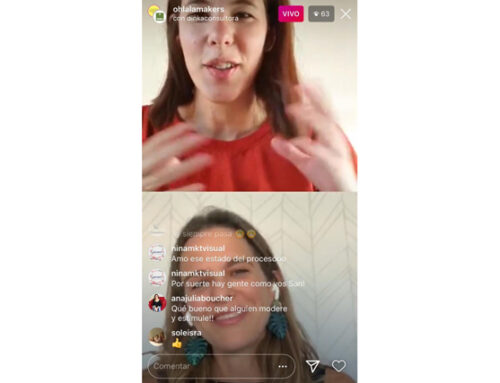Now, it is time to activate that plan that you come fuel. We help you step by step.
How many times do you stay in the idea and you can't carry it out? Maybe you even start with all the energy, but you are staying on the way because you don't have the tools to move forward. As we saw throughout these five chapters, the only one that can make the decision to realize your dreams are you. You just have to make the decision and have the attitude to do so. This is your opportunity to be the person you want to be, to contribute your grain of sand to build a better world and specify your project. But, to be able to advance at a firm step and not lose yourself along the way, it is important to organize. Through the organization you can turn dreams into action, ideas in motion and objectives into results. That is why we share this organization and execution process that has five stages to get to work, whether you want to launch a product or service as if you have a personal project.
"Through the organization you can turn dreams into action, ideas in motion and objectives into results."
1. Identify the problem
Define the purpose
You already did this in the second chapter. Every project has to have one. It will be your engine to pursue your dream, beyond the difficulties, which are going to be many, along the way.
Detect the problem, opportunity and solution
To identify the problem, empathy is essential. Focus on the person who has the problem (that you can be you), identify what he feels, how he thinks, what he needs. And now think how to frame the problem so that it is not very wide and difficult to solve or so specific that it limits you to generate an innovative proposal. From this problem you will be able to detect a change opportunity, and, from there, you will be able to devise a solution. Many times the key to success is to focus on simple solutions, do not complicate things, be practice! In this search for the solution is where you have to get your whole creativity potential that we already saw in this bookazine. I left your comfort zone and thought new alternatives or unthinkable paths.
set goals
The objectives can be for you, for entrepreneurship, for the recipient, for suppliers or for partners. But it is important to define them and make sure they are intelligent objectives, since they will guide you throughout the project so that you do not lose the focus of what you want to achieve.
2. Make a survey
Analyze the context
Here you have to see what currently exists. This can be applied to personal attitudes and skills, competition, market, etc. If it is an entrepreneurship, you have to know the alternatives in the market to identify how you can differentiate yourself, not only direct competition, but also how the problem is currently solved. What alternatives do the recipients have to solve it?
Know the recipients
Again, here empathy is everything! Put yourself in the shoes of the other to really understand what you need, what interests you, what mobilizes it. Really understanding your needs and motivations is that you will be able to offer you an innovative proposal that attracts it (even when the recipient are yourself).
3. Create your proposal
Until now, what we did was investigate and devise about an opportunity. Now it was time to define the proposal, what are we going to do to solve the need or problem you identified. In an entrepreneurship, this checkst of themes is used a lot, but you can apply it to something more personal:
Value proposal
Make a detailed definition of the product or service that you will offer, with its characteristics, its benefits, its advantages over other proposals, etc.
Resources
Here makes a list of resources needed to achieve it: materials, technology, production, etc. And also written how you are going to obtain them, what alternatives of suppliers are there, with their advantages and disadvantages.
customer segment
I defined who your project is going to, who will be the user. You can have more than one or be you.
Work team
Detail one for a what are the tasks to perform throughout the project and fix how you can segment them to define roles. Here it is important that you do not fall into the temptation to want to cover all the tasks only because they will divert you from the driving of the project and, in the case of being a business, it will not allow you to grow. This is why it is very important to work with time in the effective delegation of tasks in a work team. If you don't have equipment, maybe there are things that you can outshape or buy made.
4. Define a strategy
Action plan
I defined how you are going to execute your proposal. Put goals and establish priorities. In an entrepreneurship you have to define what your “MVP (minimum viable product)” will be, that is, that first version of your proposal that will allow you to test and learn from your mistakes.
Business model
Basically, it would be to decide how you are going to generate income to cover all costs. You have to define what the sales channels are going to be and how you are going to deliver your product or service; among other points. The business model is dynamic, changing, adapts to the market, which will undergo modifications. You can use the Business Model Canvas tool, which we explain on page 113.
Financial analysis
Do not be scared with this term if you are not a fan of numbers. But it is important to do this analysis before launching with any project. To do so, there are two important parts to consider:
a.What income can I generate?
If your project is a business or if it requires gathering funds, calculate how many products you could sell. To make this estimate, take into account how many people you could arrive and how many of them end up buying. Analyze different scenarios, one more conservative and another more encouraging to take into account both alternatives. What price would they be willing to pay? What price is profitable for your business?
b.What costs will I have? There are direct costs, which are all associated with the sale of the product or service, which have a direct relationship with sales. And there are indirect costs, which are the expenses that you will have even if you do not generate any sale. They can be rental, internet, services in general, etc.
You can apply the same for your personal scope, identify the income you generate or receive (salary or others) and the expenses you currently have (super, rent, expense, etc.), incorporating the costs of the project you have. For that you have to take into account what resources you will need and its costs to know if you will be able to face it with your current income or analyze at what time you could face it. For example, if you want to make a postgraduate degree, you have to contemplate not only the cost of classes, but also that of materials (books, biromes, internet).
To apply Smart Objectives:
Define the right objectives for any area, either in a company, an entrepreneurship or your personal life. The Smart technique is an acronym that refers to each of the characteristics that a goal must have:
S: Specific (specific): It has to be concise and clear. There is no place for ambiguities.
M: measurable (medible): It has to be something concrete that can be executed and measured in some way over time.
A: achievable (alcanzable): Feasible to execute, realistic, not impossible.
A: Relay (results -oriented): It must be aligned with the objectives and generate a result.
T: Time Bound (in a certain time): It is important to define a deadline to be able to follow up. For example, instead of saying: "I want to boost my online store," I said: "I want to increase sales in the online store by 10% in next month." Or instead of proposing: "I want to develop my creativity," he said: "I will implement a creative process per month for the next three months." These second examples are smart objectives since they are specific ("increase sales"), medibs ("10%") and in a certain time ("next month"). In addition, they are attainable and generate results aligned with your interests.
5. Implement and evaluate
We already saw in previous pages the importance of creating work routines. Discipline is what will allow you to advance your project. But do not forget the agility, the fundamental factor to adapt to the new scenarios that you are going to face. You have to be attentive and alert to have the flexibility of change to pursue your dream. Some keys at the time of implementation:
Tracing
I chose the key indicators to monitor weekly or monthly of your project. What are these "key indicators"? It is information that you can measure and that is relevant to your project: for example, if you created your YouTube channel, the amount of views and followers is fundamental. Or, if you are writing a book, it can be the number of pages written per week. The important thing is that you see them periodically and compare their evolution.
constant evaluations
They are fundamental to adjust the action plan and even the business model. Surely you are going to be wrong, so it is better to do it quickly and adjust.
Perseverance
The key to failure or error is to continue trying, not to surrender. Putting the focus on the "For what" you can look for different paths that lead you where you want to get there.
Go forward!
Now, we saw all possible steps to organize and carry out your project. Waiting for the ideal moment to start can be the reason you never come to realize it. The time to start is now: animate, mistake, learn, adjust and continue trying.
"Do not fall into the temptation to want to cover all the tasks alone because they will divert you from the driving of the project and, in the case of being a business, it will not allow you to grow"
TOOLBOX
tools to activate
Podcast: Charo Vargas, head of your life.
Jenna Kutcher, Goal Digger.
CHARLA TED: David Allen, Getting in control and creating space.
Book: Harry Altman, agile project management.
PELICULA: Steve Jobs (Danny Boyle, 2015)
By Delfina Pérès Copello
Bachelor of Economics
Consultant at DINK








